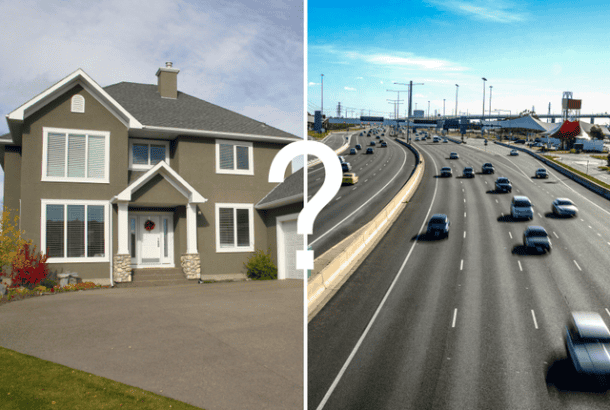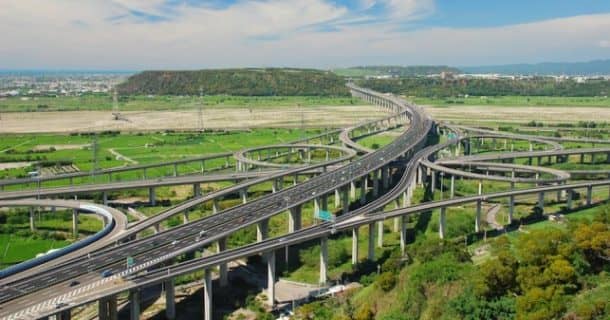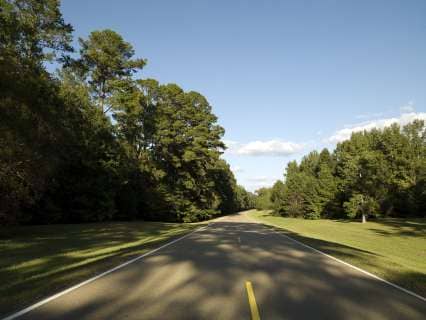Most of us have heard the old joke that goes like why the Royal Mail service delivers ‘post’ while the U.S. Postal Service delivers ‘mail’? Of course, none of us is bothered by what they call it unless it is delivered in time, often the comedian makes us wonder about these confusing things from our daily life.

Another such puzzling question is that why do we park on driveways but drive on parkways? Now you might dismiss it just as a traditional use of words but turns out that there is a kind of interesting and valid reason for why we drive on parkways and park on driveways!
The Original Meaning of the word ‘Park’
The fact is that over time, definitions of the words like park and drive have evolved. In fact, most of these words have been used long before the first car ever hit the road.
In the 19th century, the word ‘park’ was defined as:
“To put strips of lawn down the centre or along the side of (a street, the main streets of a city)”
Before this definition was suggested, the word park referred to the large enclosed private game reserves. Most of these parks were located around the large aristocratic estates in the Europe. The Charter of Friðuuald of Surrey published in 1260 uses the word park in this context:
“Bitwiene ðe shrubbes and Wine?bri?t goinde adun norðri?te binuðe ða parkes gate.”
Later, the word park was used in reference to any piece of well-maintained grounds around the state. The word then evolved to be used for the public as well as private landscaped grounds.

Before the automobile industry went big, the word parking was used for planting of shrubs, trees, and other plants while the phrase parking places was reserved for the areas designed for one to soak up nature in the presence of flora and fauna. This is why even today the word park is used to refer to areas filled with greenery and trees.
The word Parkway was used to explain the area around the parking places (the green, often wooded areas) where the horses and the carriages they pulled were stored.
The Use of the word ‘Park’ for Automobiles
In the early 20th century, the term park came to be associated with automobiles. The vehicles were stored alongside the horse driven carriages in the parkways. As more cars began to hit the road, more parkways were designed to store them. The 1916 novel Loin’s Share by Arnold Bennett used the word in the same context:
“Audrey’s motor-car…was waiting in the automobile park outside the principal gates.”

Thus, the word parking place indicated a space meant to store car when not in use. In the late 19th century, the designer of the Central Park in NYC, Frederick Law Olmsted proposed the idea of building the pleasure roads to connect various cities and the towns. To make the trip enjoyable, the pleasure roads will be flanked or parked with trees. Essentially, these were narrow, long parks that connected cities and suburbs and made travel faster.
In the mid-20th century, the word park was also used to describe the action of the driver as he brought his vehicle to a stop and stored it.
This is why you drive on the parkways!
The Origin of the term ‘Driveway.’
The Oxford English Dictionary defines the word driveway as:
“A private carriageway for a motor vehicle alongside, in front of, or leading to a house, garage, or other building; a drive.”
The word was first introduced in the 1870s. However, today the driveways are much bigger than they were in the past. The driveways in the 19th century were much longer than their modern version. Since the cars had not gone big, the driveways were used for walking, horse riding, etc.
Even when the cars became prevalent, the driveways weren’t used to park a car because ample parking space was available in the barn, etc.
As the car ownership became common and the cities became more urbanised, the driveways also shrank, and the cars were parked there.
Thus, the history proves that we have a reason to drive on parkways and park on driveways!


